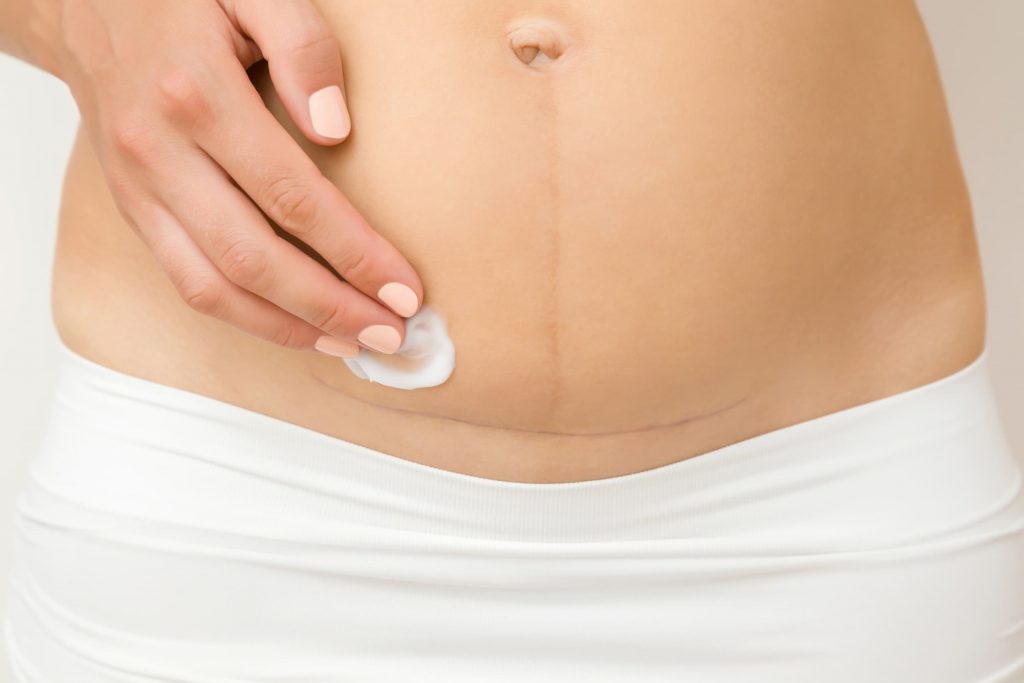Having a Caesarean Section
Special delivery
What it means for you and your baby
Some women may know they need a caesarean (C-section) long before they give birth, but for others, the decision might not be made until they go into labour. Although it’s natural to worry, a caesarean is a very straightforward procedure that’s over within an hour.
Why you might need a caesarean section
If your doctor feels that a normal delivery will put you or your baby’s health at risk, they will advise you to have a caesarean. These are some of the reasons why this decision might be made:
- Placenta praevia; when the placenta is low in your uterus or blocks your baby’s exit
- You are carrying three or more babies, or if you are having twins and neither is head-down
- Your baby is considered too large to come through the pelvis
- You have severe high blood pressure or other illnesses such as pre-eclampsia
- Your baby’s health is threatened and a quick birth is needed
- Your baby is lying breech, or another way that could prevent a normal birth
- Cord prolapse; when the umbilical cord falls forwards so your baby cannot be delivered easily
- You have an outbreak of genital herpes, which can be passed to your baby through a vaginal birth
What happens during a C-section?
The procedure may vary slightly from hospital to hospital, but here is a general guide as to what will happen.
- You’ll be given an antacid to neutralise the acid in your stomach, and antibiotics to prevent infection
- An intravenous drip will be set up to monitor your fluid levels and give you extra pain relief if you need it
- You will have a local anaesthetic (an epidural or spinal block), and a catheter to empty your bladder
- A screen will be set up across your stomach, so you will not be able to see the operation
- Some of your pubic hair will be shaved to clear the area for the incision
- Once the anaesthetic takes effect, the doctor will make an incision allowing them to deliver your baby
The delivery is over very quickly and all you should feel is a little pressure and pulling.
Unless you need a general anaesthetic or it’s an emergency, your birth partner can usually stay with you from start to finish.
“I had a last-minute caesarean, it all happened so quickly, I didn’t have time to worry about it. Before I knew it, I had my little girl in my arms!”
What happens after your baby is born?
After your baby is born, your placenta is delivered and the surgeon sews up your uterus and your abdomen. The whole procedure takes about 40 to 50 minutes, in total.
You’ll then be taken to a recovery room, to allow time for the anaesthetic to wear off. Your heart rate and blood pressure will also be checked. If you are breastfeeding, you may initially need help to position your baby.
Recovering from your caesarean section
In most cases, you’ll be out of hospital within several days depending on the hospital and your health but it takes around 6 weeks to fully recover from a caesarean section, so you’ll need some extra help at home to give you time to rest and concentrate on your baby.
Birth options for subsequent babies
Having a caesarean section for your first baby does not necessarily mean that your next childbirth will end the same way. About 80% of women1 who try for a normal delivery after a caesarean section are successful.2
Next Steps
Include your thoughts about having a C-section in your birth plan
During your last few appointments, your midwife will check your baby’s position in the womb, so make sure you attend all your scheduled meetings
Stock up on paracetamol and ibuprofen
Cook and freeze a few days’ worth of nutritious meals
Pack loose clothing that will be comfortable around your stomach
- Bangal V.B, and al. Vaginal Birth after Cesarean Section. N Am J Med Sci. 2013. 23641377
- Caughey AB, Smith CV. Vaginal Birth After Cesarean Delivery. May 11, 2018
Further Reading
So you can start planning for your new baby, check out this due date calculator1. It will help you to work out when they’re likely to arrive.
There are many symptoms other than a missed period which can be early signs of pregnancy.
In what cases is a cesarean section scheduled? How is the operation? Why is it important to surround yourself well?
How can you take care of your scar? How should you look after your child? How do you recover from the operation?… Many mothers have many questions following a caesarean section. Here are the steps to take in this particular time.
Whether planned or not, a caesarean section is not an insignificant procedure. However, although it can cause fatigue and discomfort in the days following delivery, it should not stop you wanting to breastfeed. On the contrary, breastfeeding is even recommended as it is beneficial to the child! Here are our tips and tricks for healthy breastfeeding!
Natural delivery provides major benefits to the baby. Whereas a caesarean section can weaken a child’s defence system. Breastfeeding is the ideal feeding method to remedy this and help your child build up its natural defences! Find out all the benefits of breast milk!
Are you going to have a caesarean section or have you already delivered by caesarean section? Are you considering a caesarean section? There are many common misconceptions! Take our quiz to review your knowledge.









